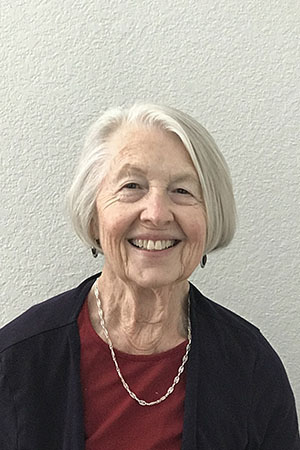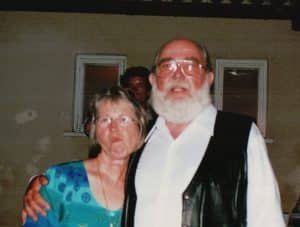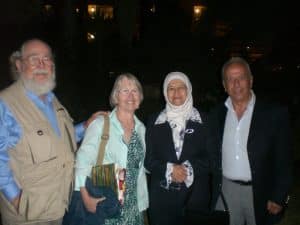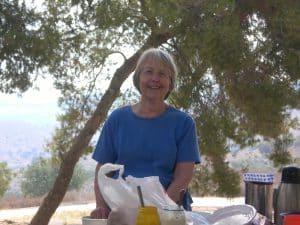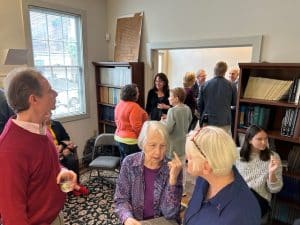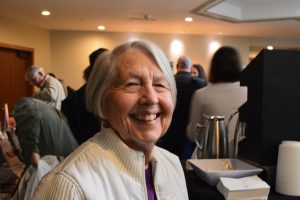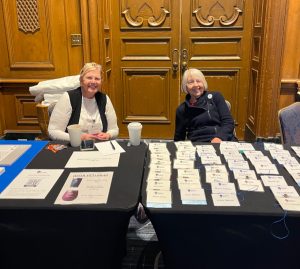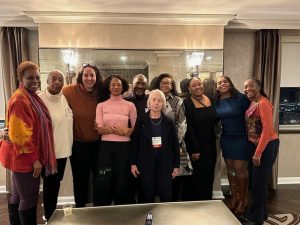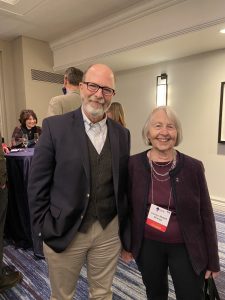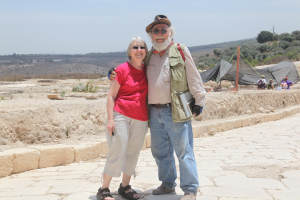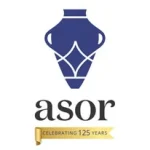
IN MEMORIAM:
CAROLYN MIDKIFF STRANGE (1937–2024)
Andy Vaughn, ASOR Executive Director
Carolyn used to describe herself merely as someone who read a book and decided to do something. She sometimes joked that she should stop reading books.
Well, I can tell you that I read books too, but I don’t change the world after I read a book. Carolyn did.
One example is Ibram X. Kendi’s book, How to be an Antiracist. A key point in this book was that antiracists must make structural change—and Carolyn did just that, and she inspired everyone else to do the same. She was not a person to scream, make demands, or protest. She acted and she inspired others to act.
As one speaker at her memorial service put it, instead of being “All hat and no cattle,” Carolyn was “All cattle and no hat.” Indeed, Carolyn was a woman of action—and that was contagious.
So how did Carolyn make structural change in ASOR that will live on? I’ll share just a partial list of things that Carolyn did of which many ASOR members may not be aware because she did them without fanfare or asking for recognition. She desired action, progress, and change and not praise:
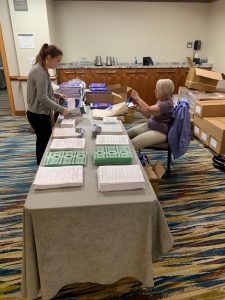
Meagan Shirley and Carolyn Strange stuffing tote bags at the 2019 Annual Meeting.
- BIPOC Endowment: Carolyn made a challenge gift to establish an endowment in ASOR for black and indigenous students to participate in excavations. ASOR currently awards about $100,000 per year in fieldwork participation scholarships (50 scholarships of $2,000 each). Carolyn wanted to ensure that ASOR would enable the participation of black and indigenous students on digs, so she made a $100,000 challenge gift to encourage the wider ASOR community to create an endowment to fund annual awards of at least five (5) scholarships at the $2,000 level. That endowment now has a market value of $292,000. Thus, ASOR will continue to fund at least five dig scholarships plus five (5) travel scholarships to the Annual Meeting for black and indigenous students.
- Strange / Midkiff Families Endowment: Carolyn and Jim Strange made a challenge gift to establish one of ASOR’s first endowments for dig scholarships for any ASOR member. Not only has this fund grown to almost $260,000, but its establishment also encouraged other members to make challenge gifts for named endowments to support fieldwork participation scholarships, excavation grants, and member research fellowships.
- ASOR’s permanent home in Old Town Alexandria—what is now named the James F. Strange Center. In 2016 when ASOR was evicted from its free office space at Boston University, Carolyn quietly (yet forcefully) told the ASOR Development Committee that we couldn’t fail, and we couldn’t set our sights too low. She argued that ASOR must be bold. She made an extraordinary challenge gift of $750,000 so that ASOR could buy an office building in Alexandria, Virginia and create a board-designated endowment to ensure that we had funds to continue the operations of the physical space. Once more, Carolyn’s leadership inspired others. ASOR purchased our office home, paid off the mortgage, and created a board-designated building endowment that now has a market value of $485,000 (just $15,000 short of our goal). As noted above, this structural change permits ASOR to continue being a flagship organization in archaeology, history, and cultural heritage by operating out of the Washington, DC area without paying rent.
- Creating video and training resources for fieldwork safety and cultural competency training.Because ASOR now awards more than $250,000 annually in dig scholarships, excavation grants, and membership research fellowships, Carolyn had the vision that ASOR should also create structural change by increasing cultural competency and awareness by requiring fellowship recipients and project directors to view and read resources that were created ASOR’s DEI committee and other volunteer partners (including Archaeology in the Community and Society of Black Archaeologists). These resources are still being created with money donated by Carolyn, and their impact will be another way that her legacy lives on.
- Initiating volunteer participation at the ASOR Annual Meeting and emboldening committees to do their work. Carolyn liked to work behind the scenes. A prime example was her arrival at the Annual Meeting on Monday so that she could assist the ASOR staff with setup. Like her work on excavation projects, Carolyn was at home behind the scenes, and all of the ASOR staff considered her “one of us.” Similarly, Carolyn was inspirational for the DEI Committee and the Membership Committees (see the remembrance by the DEI Committee Co-Chairs). She quietly insisted that committees had to be positive and couldn’t aim low. It was difficult, if not impossible, to tell Carolyn “no” or that it couldn’t be done.
- Mary Elizabeth Strange Endowment and renovations of the first floor of the Strange Center: Carolyn made a gift of $200,000 to renovate the first floor of the Strange Center so that ASOR can host heritage educational events in Old Town Alexandria. She also made a $800,000 pledge for an endowment that will distribute about $40,000 annually for programs to bring cultural property protection of the cultures from the Middle East and North Africa to the Strange Center. This endowment will be critical in changing how ASOR views itself as partnering with local community members from the countries where we work. The diaspora members, who now live in the United State, will partner with ASOR to protect heritage at risk both in the U.S. and in the countries of origin. This is another initiative that will make institutional change in ASOR, and it was near to Carolyn’s heart in part because of her two of her grandchildren (Mary Elizabeth’s adopted sons) are from Ethiopia and Thailand.
Carolyn was an ASOR member almost her entire adult life. She was a trustee since 2018. She worked behind the scenes, and was a counselor, friend, and prayer warrior. Saying that Carolyn was a friend to many is an understatement. She made time to talk to so many in her ASOR family. For me, this was also personal. When I was going through a hard time this past year, we spoke at least weekly. I knew that she prayed for me daily, and she sent encouraging texts multiple times a week. I’m certain that I’m not the only one who experienced this type of love and support. She cannot be replaced in ASOR, nor in our world. Yet, her love and her projects will live on because she did indeed create structural change in ASOR, in her church, in her community, and in her family and friends. May her memory be a blessing.
